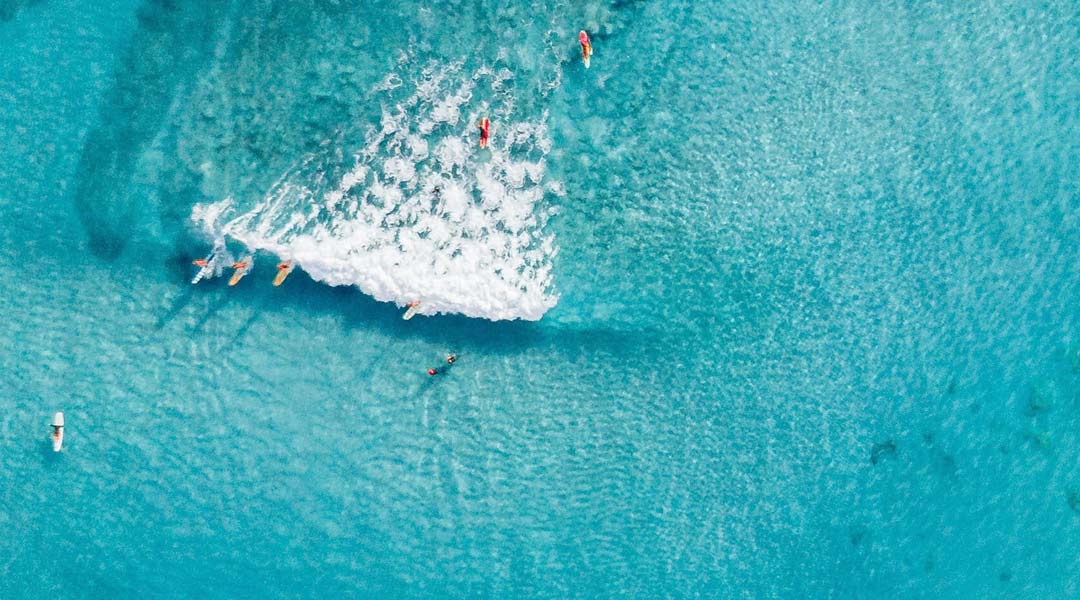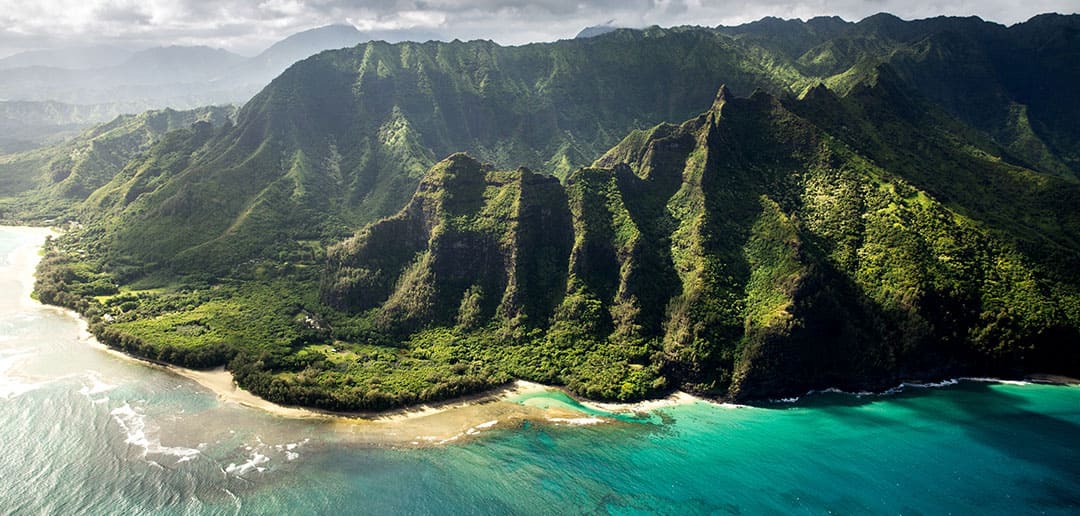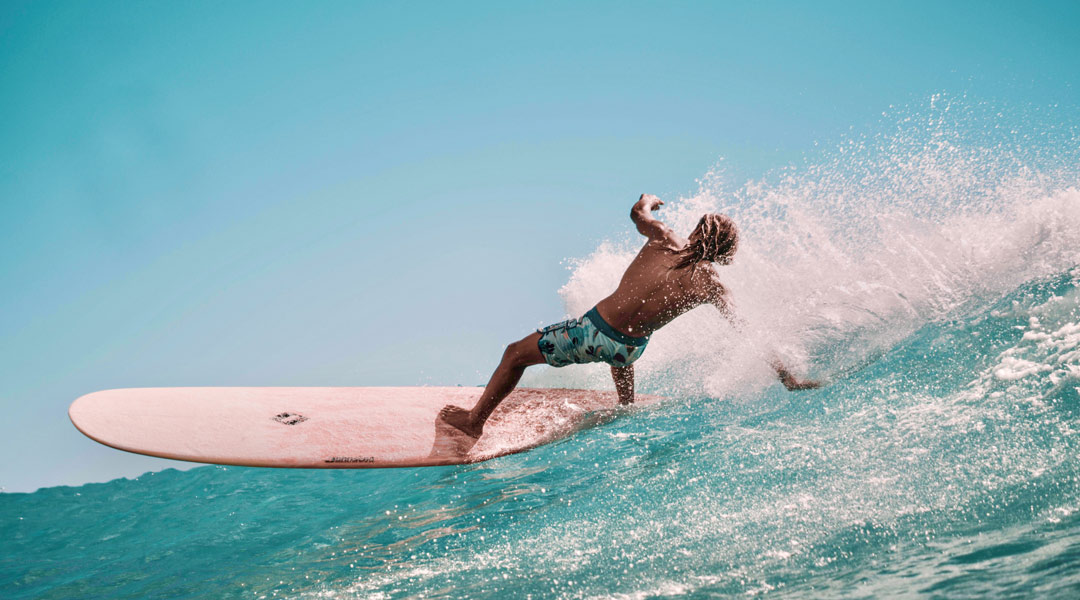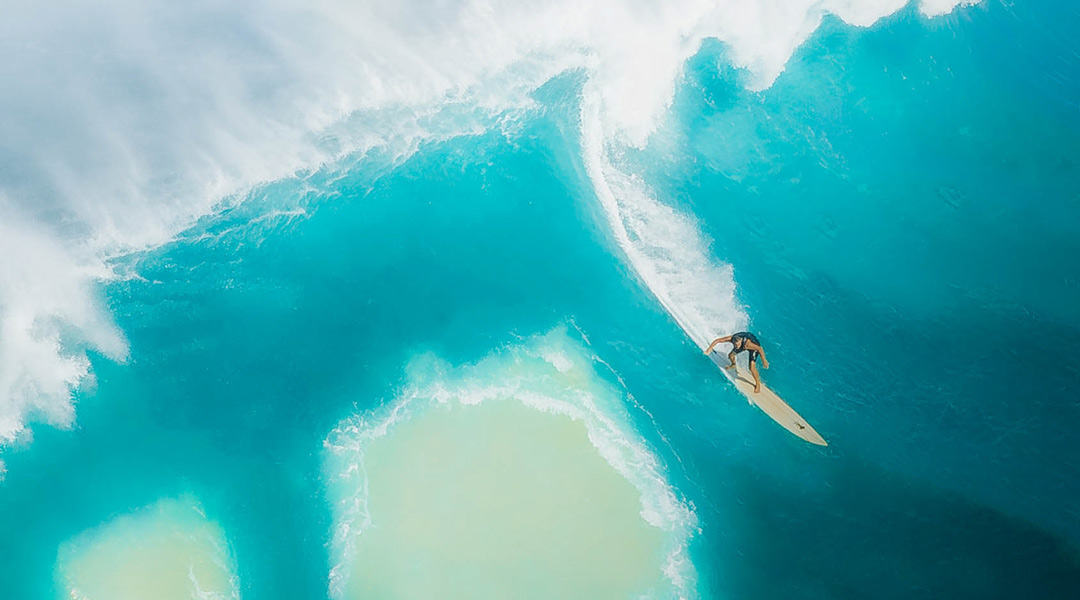History of surfing
“Sometimes I see 20 to 30 men who lay themselves flat on a piece of wood, use their arms to control the direction they are heading and start paddling for a wave. Once on the peak of the wave, they start speeding down towards the beach (…)”
That’s how Lieutenant James King, the commander of the discovery, once described the way the Hawaiians were surfing in 1779.
The History of Surfing: A Gift from Polynesia to the World
At this time, surfing was an essential part of the Hawaiian culture. The chiefs demonstrated their surfing skills and the rank of each individual was defined by the skills and knowledge shown on the ocean. Anthropologists cannot exactly date the beginning of surfing in the Polynesian culture; however it can be assumed that around 2000 B.C. people began to move from Asia to the Eastern Pacific Ocean. In the 4th century B.C. the first Polynesians arrived in Hawaii . Those who made the arduous journey from Tahiti to Hawaii were characterized by an extraordinary understanding and boundless love of the sea. They brought their customs and traditions with them to Hawaii, including surfing.

The History of Surfing in Hawaii
When Captain Cook arrived in Hawaii with the Discovery, surfing was already firmly anchored in Hawaii’s history. Places were dedicated to legendary surfing events and special rituals were developed to christen new boards, promote the swell and encourage the men and women who dared to take on the big waves. Before first contact with Cook, Hawaii was strictly divided into classes, which also had an effect on the water: there were reef and beach breaks where only the skinplings were allowed to surf and those for the normal citizens. Many of Hawaii’s leaders were revered for their surfing skills.
There were three types of Hawaiian surfboards: The Olo, up to 24ft high and thicker in the middle than at the ends, the Kiko’o, 18ft long and slightly thinner, a fast board but very difficult to handle, and the Alaia, reserved for chiefs only, 8ft. long, thin and wide at the nose and narrowing towards the back.
In 1778, when Cook’s ships reached the island, surfing was highly developed, but what Cook described in 1779 was the zenith for the time being, because in the shadow of European exploration, surfing experienced a major decline over the next 150 years. European contact had a negative impact on Hawaii because after Cook published his findings, the island chain became a destination for many adventurers, captains and missionaries. These brought new technologies and religions and thus gradually overrode Hawaiian culture and the importance of surfing. The natives were educated to monotheism and hard daily work. The only thing that died faster than the culture were the Hawaiians themselves: Plagues, alcohol and other drugs took their toll and so the population dwindled from around 600,000 in 1779 to just 40,000 in 1896. But even this stroke of fate did not cause surfing to die out.
The history of surfing: the beginning of commercialization
After the Hawaiian archipelago became the 51st state to join the USA in 1900, more and more people traveled to the islands. One of them was Jack London, who learned to surf from the journalist Alexander Ford Hume in 1907 and thus also met the most celebrated Waikiki beach boy at the time, George Freeth. All three had one thing in common: they loved the “sport of kings”. In the same year, London wrote “A Royal Sport: Surfing in Waikiki” and a year later they founded the “Hawaiian Outrigger Canoe Club”, the first club dedicated to the preservation of Hawaiian surfing, offering rental boards and surf lessons from beach huts. By 1915, the club had 1,200 members.

In the same year, the world first became aware of Duke Paoa Kahanamoku, who was not only a three-time world champion in the 100m freestyle, but was also one of Hawaii’s best surfers and traveled the world as a respected actor, using his fame to spread the word about surfing. In 1915, he had to go to Australia as part of a swimming demonstration, where he spontaneously shaped a board out of pine wood, which he demonstrated at Freshwater Beach in Manly to great acclaim, thus single-handedly laying the foundation for the “surfing superpower Australia”.
In 1928, Tom Blake, the inventor of the fin, organized the first contest, the “Pacific Coast Surf Riding Championships” in Corona del Mar. Top surfers from all over the world competed annually until the Second World War put an end to the event in 1941. However, the surfing trend continued and attracted people like Woodbridge Parker, who was simply looking for freedom and peace and, together with the Hawaiian ladies’ man Rabbit Kekai and John Kelly, a big wave pioneer, made a decisive impact on the Makaha spot. They were also the ones who developed ever faster and lighter boards in the 30s, 40s and 50s.
The history of surfing: the era of modern surfing
In 1946, boards were no longer simply shaped from wood, but Bob Simmons produced a foam-filled board with balsa rails and a plywood deck. Shortly afterwards, Pete Peterson went one step further and developed a fiberglass board that weighed only 12 kg. Fiberglass had been developed during the Second World War. In 1958, Hobie Alter and Gordon Clark were the first to produce boards made entirely of foam and fibreglass, revolutionizing the market. But it wasn’t just the boards that became faster and lighter, research was also carried out into protection from the cold water and Jack O’Neill produced the first wetsuit in the early 1950s.
In 1953, a photo appeared in newspapers around the world showing Woody Brown and two others surfing a gigantic wave in Makaha. At that time, surfing was booming in California and this picture prompted many people to travel to Hawaii.
Two of them were Fred van Dyke and Peter Cole, who together with Edie Aikau and Buffalo Keaulana became the best big wave surfers of the era. During these years, surfing developed from a fringe sport to a mainstream sport.
From this point onwards, Hollywood also loved the sport of kings and the market was literally flooded with surf films such as “Gidget” and “The Endless Summer”. This boom also gave rise to surf fashion, with everyone now wearing board shorts and listening to the songs of the Beach Boys. Everything to do with surfing was absolutely hyped. In 1966, Nat Young produced the first 9’4” board and ushered in the era of the shortboard, which made the sport boom even more. At this point it should be noted that a shortboard is only called a shortboard up to a length of 6’11”. Nat Young was just the first to start building smaller boards.
Where once there were only a dozen people surfing, there were now thousands. Surfboards were now made of plastic, mass produced and ever shorter, a far cry from their ancient Hawaiian roots. Now there are dozens of surf magazines, videos, movies and websites about surfing worldwide and a multi-million dollar market has developed that spans the globe.
Summary of the history of surfing
Despite the commercialization, the greatest benefit of surfing is the fun and special connection with nature for millions of people around the world. Surfing is an element of traditional Hawaiian culture that has survived into modern times and brings with it many other aspects of Hawaiian life – surfing is truly a gift from Polynesia to the world.



